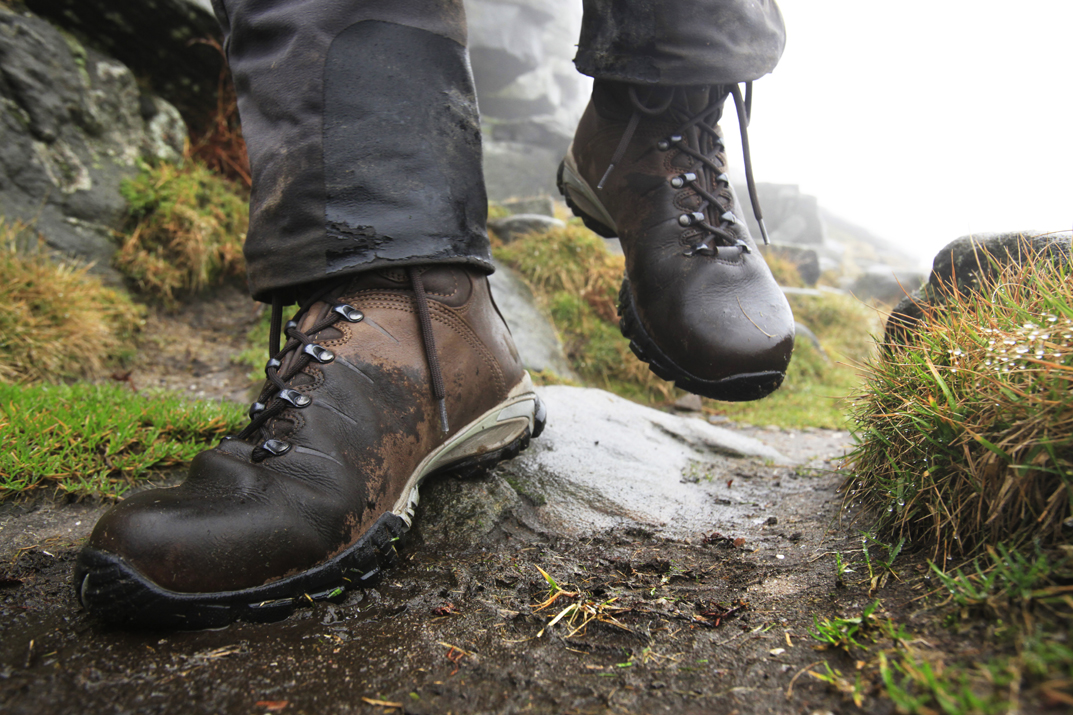Its that time of year where the hardened walkers amongst us don’t want to pack away our walking boots for the winter months but we need to adapt our walking and clothing to suit the cold and wet weather.
Winter walking brings its own enjoyment such as much less people on the walking tracks and different plants, flowers and animals, plus the scenery takes on a more eerie and atmospheric feel during the darker, colder months.
So how can we fully waterproof our boots to make sure that we keep enjoying walking through the winter?
Reproofing your boots will help to prolong their waterproof properties and how you go about that will depend on what material your boots are made from.
LEATHER BOOTS
Leather has a tendency to dry out and crack as natural oils and moisture are lost from the material.
Dubbin is a good way to help restore waterproof properties whilst conditioning and softening the leather.
First up make sure the boots are thoroughly clean then really gently use a hairdryer to heat the leather up a little, if they are warm they’ll absorb the dubbin better.
Apply the dubbin with a cloth and rub into the leather. If you find the wax is cold and hard you can heat this a little with the hairdryer too to soften it up.
Let the dubbin dry naturally (don’t use a hairdryer for this it can crack the leather) and then buff off once dry with a dry cloth.
You might also like to condition your boots to keep them more supple. Don’t overdo the conditioning as your walking boots are designed to be supportive as you walk, but if however you notice the leather cracking then grab some specific leather conditioner, you’ll pick this up in hiking/camping type stores, and work it into the leather.
SUEDE AND NUBUCK
The best way to waterproof suede and nubuck is using a waterproof spray designed for footwear, to restore the water repellent nature of the leather.
Its really a bad idea to apply dubbin wax to suede or nubuck leather boots, it isn’t designed for this type of material and it will simply mark and stain your shoes without any benefit.
Clean off your walking boots first with a suede of nubuck brush and use the re-proofing spray over the entirety of the boot.
The boots will look darker in colour, just leave to dry before use and you’ll see as the spray drys the material will return to its normal colour.
Don’t try to dry your boots faster with a hair dryer or heat source, allow them to air dry naturally.
Once the walking boots are dry then you can brush them again and they’ll look as good as new.
FABRIC BOOTS
Similarly to the suede and nubuck, a spray on proofer will help you restore the water repellent nature of fabric walking boots.
These type of boots can be harder to clean than leather boots but it’s worth making the effort to ensure they are cleaned properly before getting to work on waterproofing them because dirt particles left in the fabric can cause the fibres to decay and reduce the lifespan of your boots.
Clean off your boots as best you can and you can begin re-proofing them when they are wet or dry. We would suggest letting them dry first though as its much easier to see where you’ve sprayed the re-proofer on because the material will go darker (however if the material is wet it will already appear dark).
Once the proofer is on then just let the boot dry naturally and you are set to go!
We hope these cleaning, re-proofing and conditioning tips will help you to continue to enjoy walking in the great outdoors all the way through the autumn/winter months.
Happy hiking!
